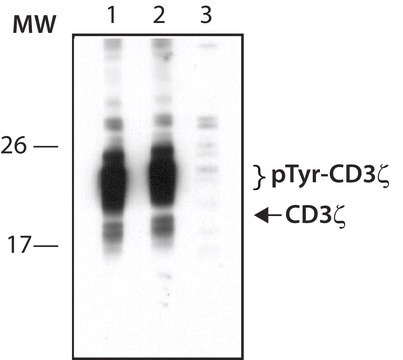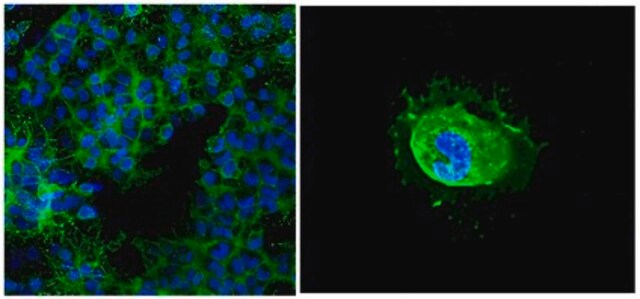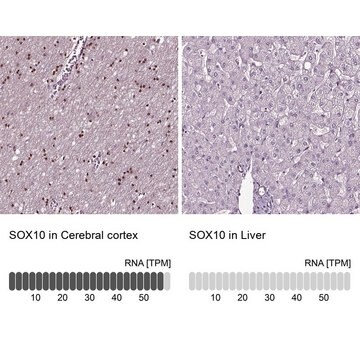MABF2812
Anti-CD137 Antibody, clone LOB12.0
Sinonimo/i:
4-1BB ligand receptor, T-cell antigen 4-1BB, Tumor necrosis factor receptor superfamily member 9
About This Item
Prodotti consigliati
Origine biologica
rat
Livello qualitativo
Forma dell’anticorpo
purified antibody
Tipo di anticorpo
primary antibodies
Clone
LOB12.0, monoclonal
PM
calculated mol wt 27.6 kDa
observed mol wt ~N/A kDa
Purificato mediante
using protein G
Reattività contro le specie
mouse
Confezionamento
antibody small pack of 100
tecniche
competitive inhibition ELISA: suitable
flow cytometry: suitable
inhibition assay: suitable
surface plasmon resonance (SPR): suitable
Isotipo
IgG2aκ
Sequenza dell’epitopo
Unknown
N° accesso ID proteina
N° accesso UniProt
Temperatura di conservazione
-10 to -25°C
Informazioni sul gene
mouse ... Tnfrsf9(21942)
Specificità
Immunogeno
Applicazioni
Isotype testing: Identity confirmation by Isotyping test.
Isotyping Analysis: The identity of this monoclonal antibody is confirmed by isotyping test to be rat IgG2a .
Tested Applications
Surface plasmon resonance: A representative lot detected CD137 in Surface plasmon resonance applications (Buchan, S.L., et al. (2018). Immunity. 49(5):958-970.e.7).
Flow Cytometry Analysis: 10 µg from a representative lot detected CD137 in Jurkat cells expressing mouse CD137.
Agonist Activity: A representative lot of this antibody co-stimulated CD8+ T cells and potentiated anti-tumor immunity in mice.(Taraban, V.Y., et al. (2002). Eur J Immunol. 32(12); 3617-3627 ).
Competition Assay: A representative lot of this antibody competed for binding to 4-1BB on effector T cells. (Buchan, S.L., et al. (2018). Immunity. 49(5):958-970.e.7).
Flow Cytometry Analysis: A representative lot detected CD137 in Flow Cytometry applications (Buchan, S.L., et al. (2018). Immunity. 49(5):958-970.e.7).
Note: Actual optimal working dilutions must be determined by end user as specimens, and experimental conditions may vary with the end user.
Descrizione del bersaglio
Stato fisico
Ricostituzione
Stoccaggio e stabilità
Altre note
Esclusione di responsabilità
Non trovi il prodotto giusto?
Prova il nostro Motore di ricerca dei prodotti.
Codice della classe di stoccaggio
12 - Non Combustible Liquids
Classe di pericolosità dell'acqua (WGK)
WGK 2
Punto d’infiammabilità (°F)
Not applicable
Punto d’infiammabilità (°C)
Not applicable
Certificati d'analisi (COA)
Cerca il Certificati d'analisi (COA) digitando il numero di lotto/batch corrispondente. I numeri di lotto o di batch sono stampati sull'etichetta dei prodotti dopo la parola ‘Lotto’ o ‘Batch’.
Possiedi già questo prodotto?
I documenti relativi ai prodotti acquistati recentemente sono disponibili nell’Archivio dei documenti.
Il team dei nostri ricercatori vanta grande esperienza in tutte le aree della ricerca quali Life Science, scienza dei materiali, sintesi chimica, cromatografia, discipline analitiche, ecc..
Contatta l'Assistenza Tecnica.






